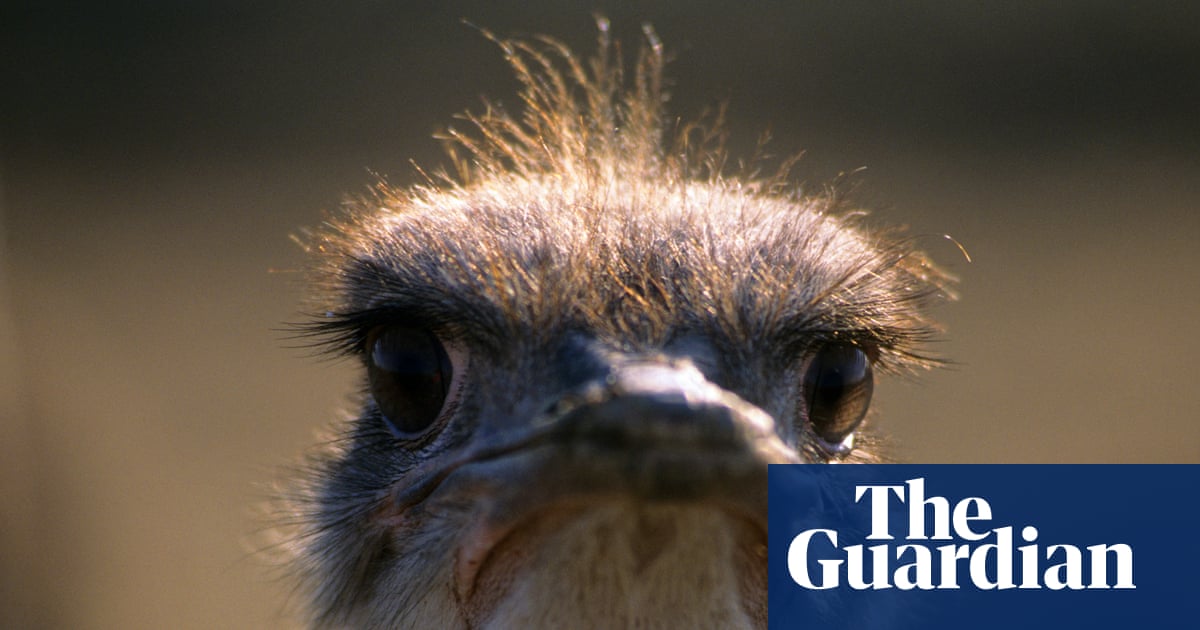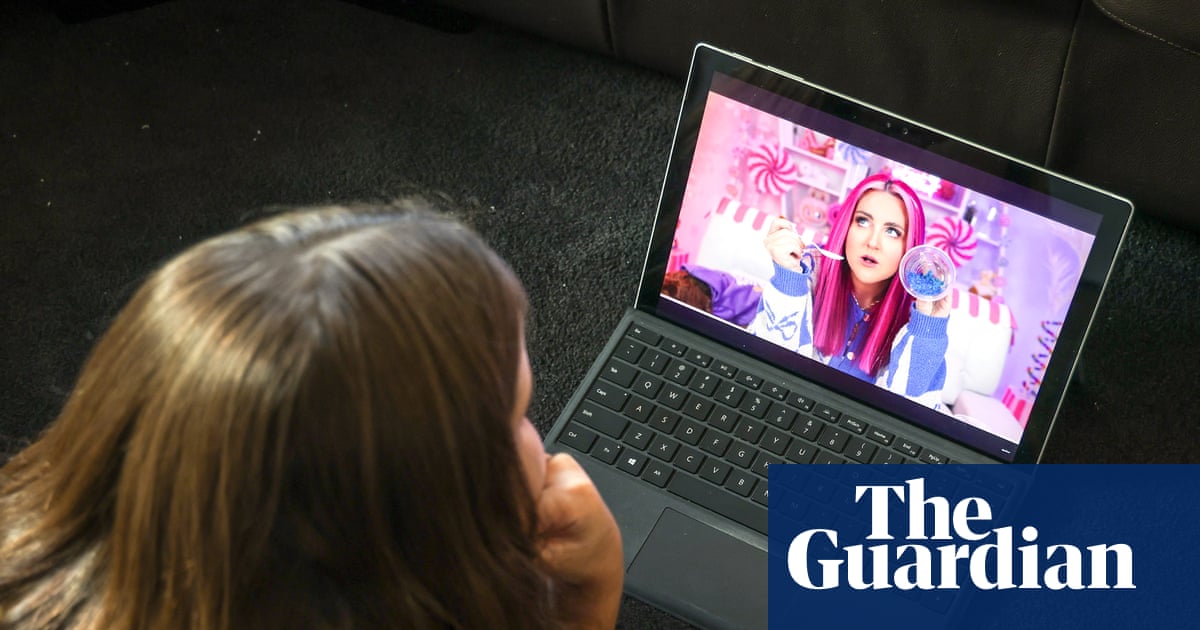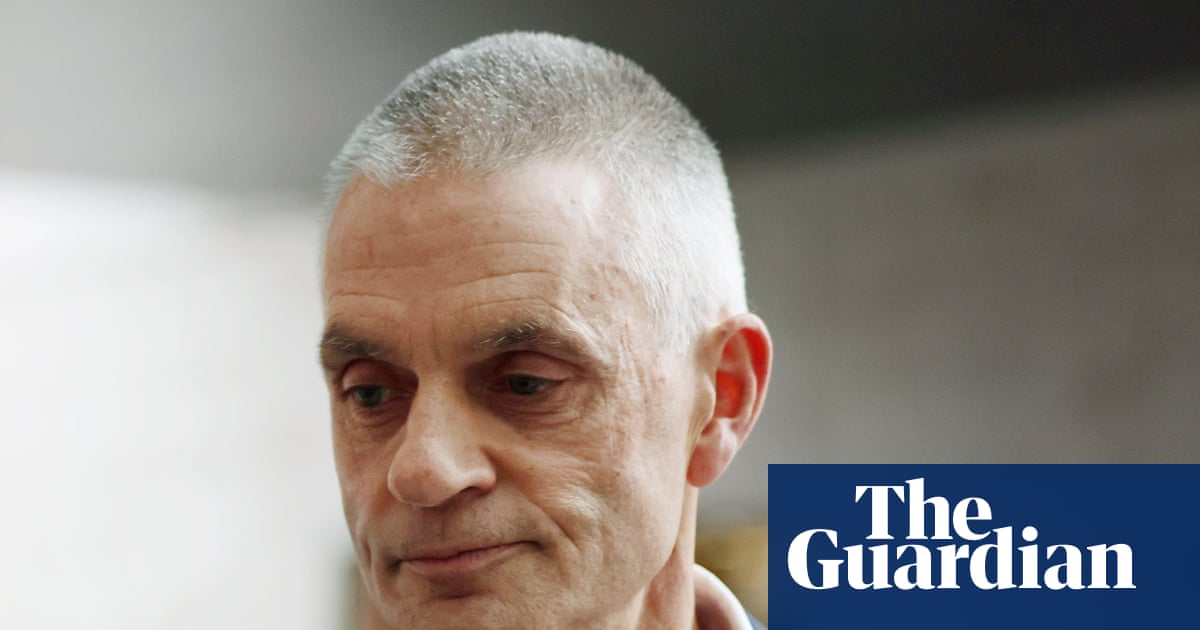Just past a scrum of dog walkers, about 40 people are urgently combing through the sand on hands and knees. Their task is to try to remove millions of peppercorn-sized black plastic biobeads from where they have settled in the sand. Beyond them, a seal carcass grins menacingly, teeth protruding from its rotting skull.
Last week, an environmental disaster took place on Camber Sands beach, on what could turn out to be an unprecedented scale. Eastbourne Wastewater Treatment Works, owned by Southern Water, experienced a mechanical failure and spewed out millions of biobeads on to the Sussex coastline. Southern Water has since taken responsibility for the spill. Ironically, biobeads are used to clean wastewater – bacteria attach to their rough, crinkly surface and clean the water of contaminants.
In the days since, volunteers have flocked to the beach. On a chilly November morning, beneath a blue sky, they painstakingly pick out the minuscule beads by hand. It is mind-numbingly tedious work.
Others – much to the envy of the hand-pickers – have sieves. One volunteer has fashioned a sieve from a mesh onion sack found nearby.
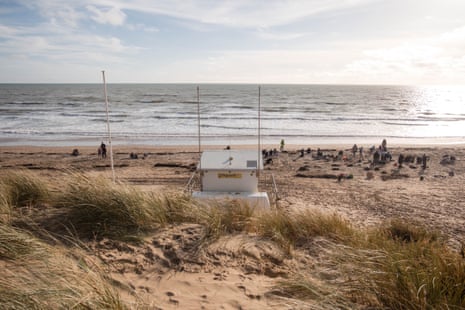
-
Camber Sands is one of England’s most popular beaches, with rare dune habitat


-
Volunteers use nets, sieves and dustpans and brushes to try to remove as many of the millions of biobeads as they can
“We’re scooping up the sand, then pouring the sand over a bucket into a sieve, and then pouring the water on top, so that we just get the beads,” says Hastings resident Roisin O’Gorman.
Andy Dinsdale, the founder of Strandliners, an environmental organisation that runs beach cleanups, says: “They’ve got to get down on their hands and knees, almost into the strandline [the line of seaweed and other debris that lines the high water mark on beaches], to look for very small 5mm black pellets. We can only do our best.”
He is noticeably exhausted from his days-long effort coordinating the cleanup. He has missed his son’s birthday celebrations, he says, to be here.
Despite their valiant efforts, many volunteers feel helpless. Walking tramples the plastic further into the sand and overfilled bin bags of waste can split, putting workers back to square one. “Kneeling on the sand, on your knees, just picking them out, one by one, is futile,” says Nick, a volunteer from Tunbridge Wells, in frustration.

-
Many volunteers feel frustrated and helpless at the seeming futility of cleaning up the spilled biobeads
To make more of a dent, experts have brought in a special machine. “Do you remember Teletubbies?” says Dinsdale. He points about a mile down the beach, towards what looks like a giant vacuum cleaner – remarkably reminiscent of the character Noo-Noo from the children’s television series – sucking up a carpet of black beads.
This microplastic removal machine is the invention of Joshua Beech, an environmental scientist and founder of the cleanup organisation Nurdle. “It works by vacuuming up material, separating it by density, and then sieving and separating in the back [of the machine] so it comes out as nearly pure plastic in the collection trays,” he says.
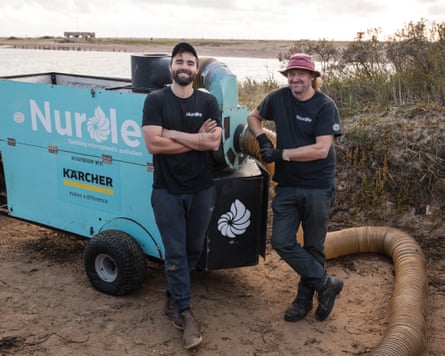
-
Joshua Beech, left, and Roy Beal with their beach-cleaning machine
Beech and his colleague Roy Beal have spent five backbreaking days vacuuming the beach from sunrise to sunset. Beech hoists the heavy nozzle on to his shoulders while Beal holds it underarm. “He has a rugby player’s shoulders,” says Beal. “I have kayaker’s shoulders.”
They hope that removing as many biobeads as possible can prevent more damage.
Tamara Galloway, professor of ecotoxicology at the University of Exeter, says microplastics “overlap with the prey item size of many marine organisms and can enter the food web, with the potential to transfer contaminants into cells and tissues”.
They can also break down and leach harmful compounds that affect animals’ hormones and cause reproductive problems. Local people are already concerned by an unusual number of stranded animals – three seals and a porpoise – that recently washed up on the beach. At this stage, the UK Cetacean Strandings Investigation Programme (CSIP), which investigates strandings, doesn’t think these deaths are linked to the spill.
Rye Harbour nature reserve, adjacent to Camber Sands, is Sussex Wildlife Trust’s largest reserve. This special area is “a matrix of wetland habitat”, influenced by and linked to the sea, says site manager Paul Tinsley-Marshall. “The vegetated shingle is a globally threatened habitat.” It is home to more than 4,355 species, including common, sandwich and little terns, oystercatchers, plovers and avocets. Biobead pollution has now been confirmed at Rye Harbour, and the reserve’s team is currently assessing the damage and carefully planning their cleanup of this sensitive habitat.

-
Camber Sands is part of a special area described as ‘a matrix of wetland habitat’ influenced by and linked to the sea
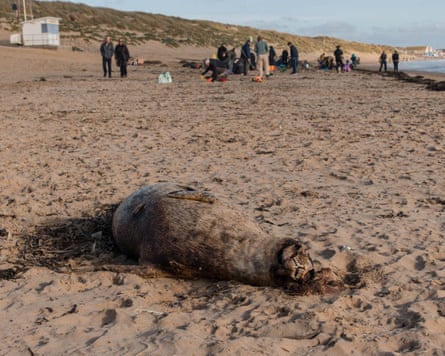

-
A dead seal near where the volunteers are working; sacks of plastic biobeads gathered by the team
According to Strandliners, there have been two previous large-scale biobead incidents reported to the Environment Agency, in 2010 and 2017.
“This is the worst microplastic spill we’ve seen this year,” says Beech. Worse even than the spill of nurdles (pre-production plastic pellets) in March, when two ships collided in the North Sea. The plastic beads washed up on Norfolk beaches and the surrounding coastline.
The harm caused by the biobeads at Camber may depend on their composition. Beads like these used to be recycled from potentially toxic e-waste until regulatory legislation in 2006. No one knows when these beads were made, Dinsdale says.
With the sun due to set at 4.20pm, time on the beach is limited. “We’re fighting against the sunlight,” says volunteer Cate Lamb who has travelled from London with her partner, Khalid Flynn, and eight-year-old Maya Flynn. “We feel like we’re fighting a losing battle, a little, because of the scale of the challenge.”
At that moment, her bucket splits.
Rother district council says attempts to remove all the pellets have “proven impossible” and that they “expect further large amounts to be deposited in the coming weeks and months”.
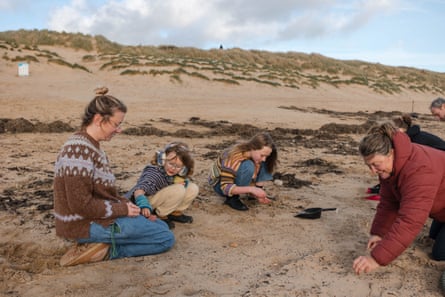
-
Entire families get involved in beach cleaning on Camber Sands
Beech and the Nurdle team hope to return after the next spring tide brings in more, but this is dependent on them being able to cover the costs of a second clean.
The money they make selling recycled sheeting made from the beach plastics to fund future cleanups isn’t enough. “We can’t afford to come back,” says Beech. “But the environment needs us back.”
Southern Water has apologised for the spill but Helena Dollimore, the MP for Hastings and Rye, wants it to go further by funding the cleanup and any future nature restoration. She is also calling for an independent investigation. “Southern Water cannot be trusted to mark their own homework,” she says.

 2 hours ago
5
2 hours ago
5




